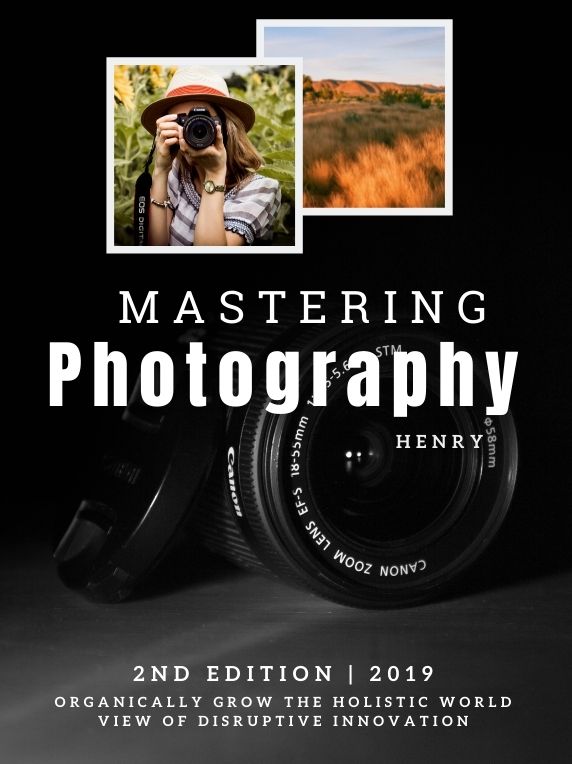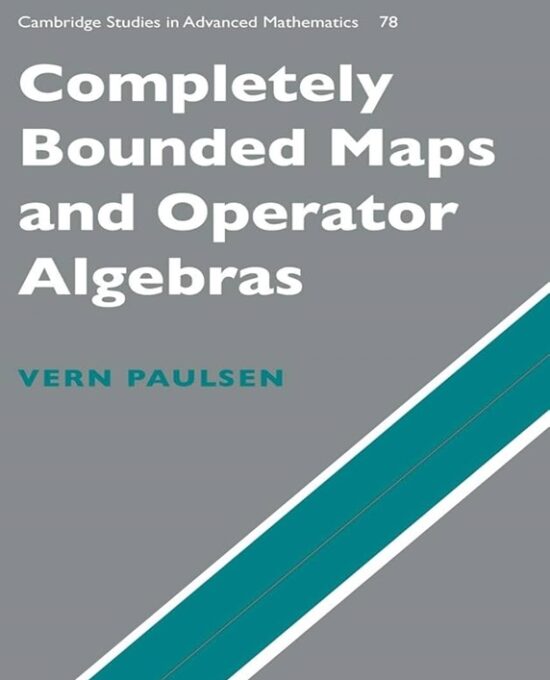Basic Course in Probability Theory
This text develops the necessary background in probability theory underlying diverse treatments of stochastic processes and their wide-ranging applications. In this second edition, the text has been reorganized for didactic purposes, new exercises have been added and basic theory has been expanded. General Markov dependent sequences and their convergence to equilibrium is the subject of an entirely new chapter. The introduction of conditional expectation and conditional probability very early in the text maintains the pedagogic innovation of the first edition; conditional expectation is illustrated in detail in the context of an expanded treatment of martingales, the Markov property, and the strong Markov property. Weak convergence of probabilities on metric spaces and Brownian motion are two topics to highlight. A selection of large deviation and/or concentration inequalities ranging from those of Chebyshev, Cramer–Chernoff, Bahadur–Rao, to Hoeffding have been added,with illustrative comparisons of their use in practice. This also includes a treatment of the Berry–Esseen error estimate in the central limit theorem.
The authors assume mathematical maturity at a graduate level; otherwise the book is suitable for students with varying levels of background in analysis and measure theory. For the reader who needs refreshers, theorems from analysis and measure theory used in the main text are provided in comprehensive appendices, along with their proofs, for ease of reference.
Rabi Bhattacharya is Professor of Mathematics at the University of Arizona. Edward Waymire is Professor of Mathematics at Oregon State University. Both authors have co-authored numerous books, including a series of four upcoming graduate textbooks in stochastic processes with applications.
Basic Course in Probability Theory
This text develops the necessary background in probability theory underlying diverse treatments of stochastic processes and their wide-ranging applications. In this second edition, the text has been reorganized for didactic purposes, new exercises have been added and basic theory has been expanded. General Markov dependent sequences and their convergence to equilibrium is the subject of an entirely new chapter. The introduction of conditional expectation and conditional probability very early in the text maintains the pedagogic innovation of the first edition; conditional expectation is illustrated in detail in the context of an expanded treatment of martingales, the Markov property, and the strong Markov property. Weak convergence of probabilities on metric spaces and Brownian motion are two topics to highlight. A selection of large deviation and/or concentration inequalities ranging from those of Chebyshev, Cramer–Chernoff, Bahadur–Rao, to Hoeffding have been added,with illustrative comparisons of their use in practice. This also includes a treatment of the Berry–Esseen error estimate in the central limit theorem.
The authors assume mathematical maturity at a graduate level; otherwise the book is suitable for students with varying levels of background in analysis and measure theory. For the reader who needs refreshers, theorems from analysis and measure theory used in the main text are provided in comprehensive appendices, along with their proofs, for ease of reference.
Rabi Bhattacharya is Professor of Mathematics at the University of Arizona. Edward Waymire is Professor of Mathematics at Oregon State University. Both authors have co-authored numerous books, including a series of four upcoming graduate textbooks in stochastic processes with applications.
Brownian Motion, Martingales, and Stochastic Calculus
Published on 2018
This book offers a rigorous and self-contained presentation of stochastic integration and stochastic calculus within the general framework of continuous semimartingales. The main tools of stochastic calculus, including Itô’s formula, the optional stopping theorem and Girsanov’s theorem, are treated in detail alongside many illustrative examples. The book also contains an introduction to Markov processes, with applications to solutions of stochastic differential equations and to connections between Brownian motion and partial differential equations. The theory of local times of semimartingales is discussed in the last chapter.
Since its invention by Itô, stochastic calculus has proven to be one of the most important techniques of modern probability theory, and has been used in the most recent theoretical advances as well as in applications to other fields such as mathematical finance. Brownian Motion, Martingales, and Stochastic Calculus provides a strong theoretical background to the reader interested in such developments.
Beginning graduate or advanced undergraduate students will benefit from this detailed approach to an essential area of probability theory. The emphasis is on concise and efficient presentation, without any concession to mathematical rigor. The material has been taught by the author for several years in graduate courses at two of the most prestigious French universities. The fact that proofs are given with full details makes the book particularly suitable for self-study. The numerous exercises help the reader to get acquainted with the tools of stochastic calculus.
Brownian Motion, Martingales, and Stochastic Calculus
This book offers a rigorous and self-contained presentation of stochastic integration and stochastic calculus within the general framework of continuous semimartingales. The main tools of stochastic calculus, including Itô’s formula, the optional stopping theorem and Girsanov’s theorem, are treated in detail alongside many illustrative examples. The book also contains an introduction to Markov processes, with applications to solutions of stochastic differential equations and to connections between Brownian motion and partial differential equations. The theory of local times of semimartingales is discussed in the last chapter.
Since its invention by Itô, stochastic calculus has proven to be one of the most important techniques of modern probability theory, and has been used in the most recent theoretical advances as well as in applications to other fields such as mathematical finance. Brownian Motion, Martingales, and Stochastic Calculus provides a strong theoretical background to the reader interested in such developments.
Beginning graduate or advanced undergraduate students will benefit from this detailed approach to an essential area of probability theory. The emphasis is on concise and efficient presentation, without any concession to mathematical rigor. The material has been taught by the author for several years in graduate courses at two of the most prestigious French universities. The fact that proofs are given with full details makes the book particularly suitable for self-study. The numerous exercises help the reader to get acquainted with the tools of stochastic calculus.
Completely Bounded Maps and Operator Algebras
Published on 2024
In this book, first published in 2003, the reader is provided with a tour of the principal results and ideas in the theories of completely positive maps, completely bounded maps, dilation theory, operator spaces and operator algebras, together with some of their main applications. The author assumes only that the reader has a basic background in functional analysis, and the presentation is self-contained and paced appropriately for graduate students new to the subject. Experts will also want this book for their library since the author illustrates the power of methods he has developed with new and simpler proofs of some of the major results in the area, many of which have not appeared earlier in the literature. An indispensable introduction to the theory of operator spaces for all who want to know more.
Completely Bounded Maps and Operator Algebras
In this book, first published in 2003, the reader is provided with a tour of the principal results and ideas in the theories of completely positive maps, completely bounded maps, dilation theory, operator spaces and operator algebras, together with some of their main applications. The author assumes only that the reader has a basic background in functional analysis, and the presentation is self-contained and paced appropriately for graduate students new to the subject. Experts will also want this book for their library since the author illustrates the power of methods he has developed with new and simpler proofs of some of the major results in the area, many of which have not appeared earlier in the literature. An indispensable introduction to the theory of operator spaces for all who want to know more.
Course in Functional Analysis
Published on 2010
Functional analysis has become a sufficiently large area of mathematics that it is possible to find two research mathematicians, both of whom call themselves functional analysts, who have great difficulty understanding the work of the other. The common thread is the existence of a linear space with a topology or two (or more). Here the paths diverge in the choice of how that topology is defined and in whether to study the geometry of the linear space, or the linear operators on the space, or both. In this book I have tried to follow the common thread rather than any special topic. I have included some topics that a few years ago might have been thought of as specialized but which impress me as interesting and basic. Near the end of this work I gave into my natural temptation and included some operator theory that, though basic for operator theory, might be considered specialized by some functional analysts.
Course in Functional Analysis
Functional analysis has become a sufficiently large area of mathematics that it is possible to find two research mathematicians, both of whom call themselves functional analysts, who have great difficulty understanding the work of the other. The common thread is the existence of a linear space with a topology or two (or more). Here the paths diverge in the choice of how that topology is defined and in whether to study the geometry of the linear space, or the linear operators on the space, or both. In this book I have tried to follow the common thread rather than any special topic. I have included some topics that a few years ago might have been thought of as specialized but which impress me as interesting and basic. Near the end of this work I gave into my natural temptation and included some operator theory that, though basic for operator theory, might be considered specialized by some functional analysts.
Funcational Analysis I
Published on 1980
This book is the first of a multivolume series devoted to an exposition of functional analysis methods in modern mathematical physics. It describes the fundamental principles of functional analysis and is essentially self-contained, although there are occasional references to later volumes. We have included a few applications when we thought that they would provide motivation for the reader. Later volumes describe various advanced topics in functional analysis and give numerous applications in classical physics, modern physics, and partial differential equations.
Funcational Analysis I
This book is the first of a multivolume series devoted to an exposition of functional analysis methods in modern mathematical physics. It describes the fundamental principles of functional analysis and is essentially self-contained, although there are occasional references to later volumes. We have included a few applications when we thought that they would provide motivation for the reader. Later volumes describe various advanced topics in functional analysis and give numerous applications in classical physics, modern physics, and partial differential equations.
Graph Theory
Published on 2018
This standard textbook of modern graph theory, now in its fifth edition, combines the authority of a classic with the engaging freshness of style that is the hallmark of active mathematics. It covers the core material of the subject with concise yet reliably complete proofs, while offering glimpses of more advanced methods in each field by one or two deeper results, again with proofs given in full detail. The book can be used as a reliable text for an introductory course, as a graduate text, and for self-study.
Graph Theory
This standard textbook of modern graph theory, now in its fifth edition, combines the authority of a classic with the engaging freshness of style that is the hallmark of active mathematics. It covers the core material of the subject with concise yet reliably complete proofs, while offering glimpses of more advanced methods in each field by one or two deeper results, again with proofs given in full detail. The book can be used as a reliable text for an introductory course, as a graduate text, and for self-study.
Introduction To Commutative Algebra
Published on 1994
In this book, first published in 2003, the reader is provided with a tour of the principal results and ideas in the theories of completely positive maps, completely bounded maps, dilation theory, operator spaces and operator algebras, together with some of their main applications. The author assumes only that the reader has a basic background in functional analysis, and the presentation is self-contained and paced appropriately for graduate students new to the subject. Experts will also want this book for their library since the author illustrates the power of methods he has developed with new and simpler proofs of some of the major results in the area, many of which have not appeared earlier in the literature. An indispensable introduction to the theory of operator spaces for all who want to know more.
Introduction To Commutative Algebra
In this book, first published in 2003, the reader is provided with a tour of the principal results and ideas in the theories of completely positive maps, completely bounded maps, dilation theory, operator spaces and operator algebras, together with some of their main applications. The author assumes only that the reader has a basic background in functional analysis, and the presentation is self-contained and paced appropriately for graduate students new to the subject. Experts will also want this book for their library since the author illustrates the power of methods he has developed with new and simpler proofs of some of the major results in the area, many of which have not appeared earlier in the literature. An indispensable introduction to the theory of operator spaces for all who want to know more.






